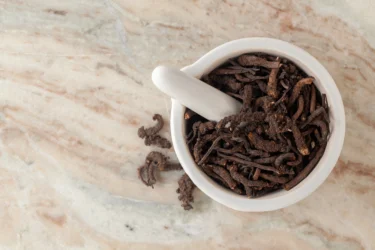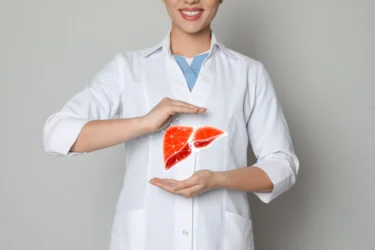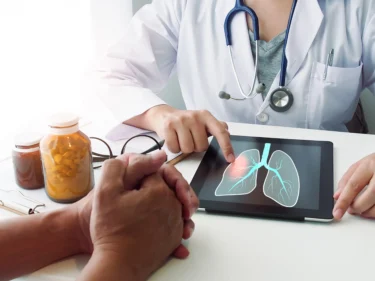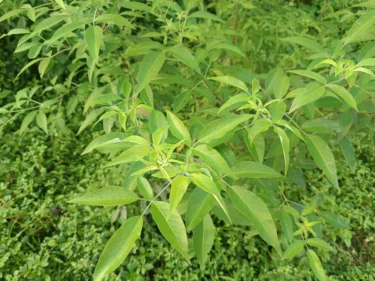Nirgundi: Benefits, Uses, Side Effects & More!
By Dr Anuja Bodhare +2 more

Get,

to manage your symptom
Get your,


4 Cr+ families
benefitted

OTP sent to 9988776655



You’ve successfully subscribed to receive
doctor-approved tips on
Whatsapp

Get ready to feel your best.

Hi There,
Download the PharmEasy App now!!


Register to Avail the Offer
Send OTPBy continuing, you agree with our Privacy Policy and Terms and Conditions

Hi There,
Sign up on PharmEasy now!!
Trusted by 4 crore+ families

OTP sent to 9988776655



You have unlocked 25% off on medicines




Code: NU25

Comments


Leave your comment here
By Dr Anuja Bodhare +2 more
Table of Contents
Nirgundi is an Ayurvedic medicine made from the dried leaves of Vitex negundo (Family Verbenaceae), a large aromatic shrub or small tree up to 4.5 m in height, common throughout the country to an altitude of 1500 m in the outer Himalayas1. It is commonly known as Five-leaved chaste trees, which is a large family of herbs, shrubs, and trees, comprising about 75 genera and nearly 2500 species2.

Common names of Vitex Negundo include Nirgundi and Sindhuvara in Sanskrit. Nirgundi is already in clinical use in traditional systems of medicine including Ayurveda, Unani, and Siddha for the management of pain, headache, inflammation, leukoderma, enlargement of spleen, rheumatoid arthritis, gonorrhoea, bronchitis, fever, cold and cough2. The leaves of V.negundo have been reported to possess pesticidal and antifungal properties2.
The Sanskrit word for Vitex negundo, a plant commonly known as nirgundi, carries a meaningful translation. ‘Nirgundi’ literally translates to ‘that which protects the body from diseases.’ This herb holds significance in Ayurvedic medicine, as it is mentioned in all of the Ayurvedic Samhitas, which are ancient texts that form the foundation of Ayurveda5.
Dr. Siddharth Gupta, B.A.M.S M.D (Ayu)
Nirgundi contains at least 0.25 percent of negundoside and 1.0 percent of agnuside when assayed1. The following table contains the chemical components present in the Nirgundi plant:
The leaves of nirgundi have antibacterial, laxative, antioxidant, anticonvulsant, hypoglycaemic, and anti-inflammatory properties2. The roots, barks, and fruits too have medicinal properties. Roots of nirgundi are one of the ingredients of the herbal formulation called ‘Dashamularishta’, used in the management of colitis, dysentery, diarrhoea, flatulence, fever, vomiting, and colic2. The leaves contain alkaloid nisindine, flavonoids like flavones, luteolin-7-glycoside an essential oil, and constituents like vitamin C, and carotene that account for different biological actions2.
Did you know?





Nirgundi root decoction can be used for managing bronchitis and asthma2,3.

The leaf extracts of Vitex Negundo were reported for their anti-hyperglycemic activity in animals2,3.

Washing the wounds with nirgundi leaves extract can aid in cleaning infected ulcers3.


Nirgundi, a versatile plant, has an amazing mosquito-repellent quality! During the rainy season, the leaves of nirgundi are burned in a fire, that may create a smoky shield that keeps mosquitoes and insects away from both animals and humans5.
Dr. Rajeev Singh, BAMS
Also Read: Nutmeg (Jaiphal): Uses, Benefits, Precautions & More!
The following parts of the Nirgundi plant can be used:
Your Ayurvedic physician will prescribe you the form and dose as per your needs.
Dry nirgundi leaves have a traditional use of being placed with stored woollen garments. This is because the leaves have properties that repel insects and worms, which may help protect the woollen items from damage5.
Dr. Smita Barode, B.A.M.S, M.S.
Also Read: Suhaga: Uses, Benefits, Precautions & More!
Keep the following points in mind:
Also Read: Kaunch Beej – Uses, Benefits & Side Effects
Nirgundi leaves can be used as powder, juice, extract, and paste. The primary process involves boiling or crushing the leaves for chemical extractions2.
The ethanolic extract of V. negundo showed antiallergic activity against mast cells and inhibited oedema (swelling)2,3. Thus, may be useful in dealing with skin allergies once large-scale human studies are done.
Nirgundi has shown and thus, may be used for its protective action on the liver as it prevents inflammation. The extract of seeds can be used to lower elevated liver enzymes and prevent liver damage2,4.
Nirgundi leaf extracts show high fever-reducing and pain-relieving activities. They may be useful for managing chronic fever and body pain once more human studies are available2,4.
Nirgundi has carminative action, which can help deal with gas and digestive problems. In addition, the decoction of juice from the leaves too may aid in managing digestive issues2,4.
Nirgundi leaves should be stored in a dry airtight container, and they should be kept away from direct sunlight1.
Disclaimer: The information provided here is for educational/awareness purposes only and is not intended to be a substitute for medical treatment by a healthcare professional and should not be relied upon to diagnose or treat any medical condition. The reader should consult a registered medical practitioner to determine the appropriateness of the information and before consuming any medication. PharmEasy does not provide any guarantee or warranty (express or implied) regarding the accuracy, adequacy, completeness, legality, reliability or usefulness of the information; and disclaims any liability arising thereof.
Links and product recommendations in the information provided here are advertisements of third-party products available on the website. PharmEasy does not make any representation on the accuracy or suitability of such products/services. Advertisements do not influence the editorial decisions or content. The information in this blog is subject to change without notice. The authors and administrators reserve the right to modify, add, or remove content without notification. It is your responsibility to review this disclaimer regularly for any changes.
Comments

Leave your comment...

View all comments(1)
You may also like
Is it useful Nirgundi for COPD ASTHAMA